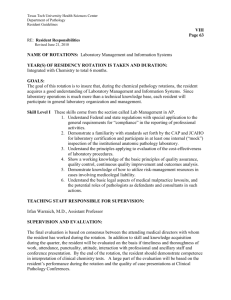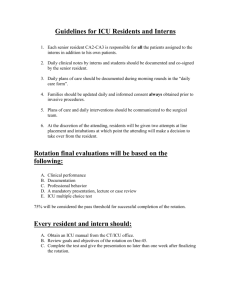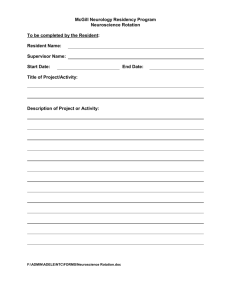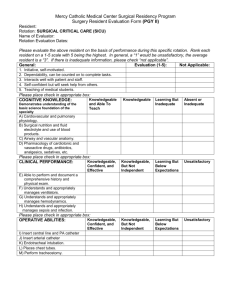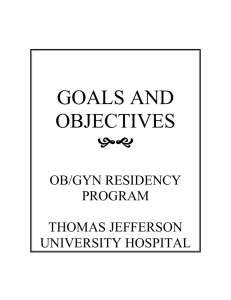Pediatric Pathology Rotation - Objectives Patient Care
advertisement
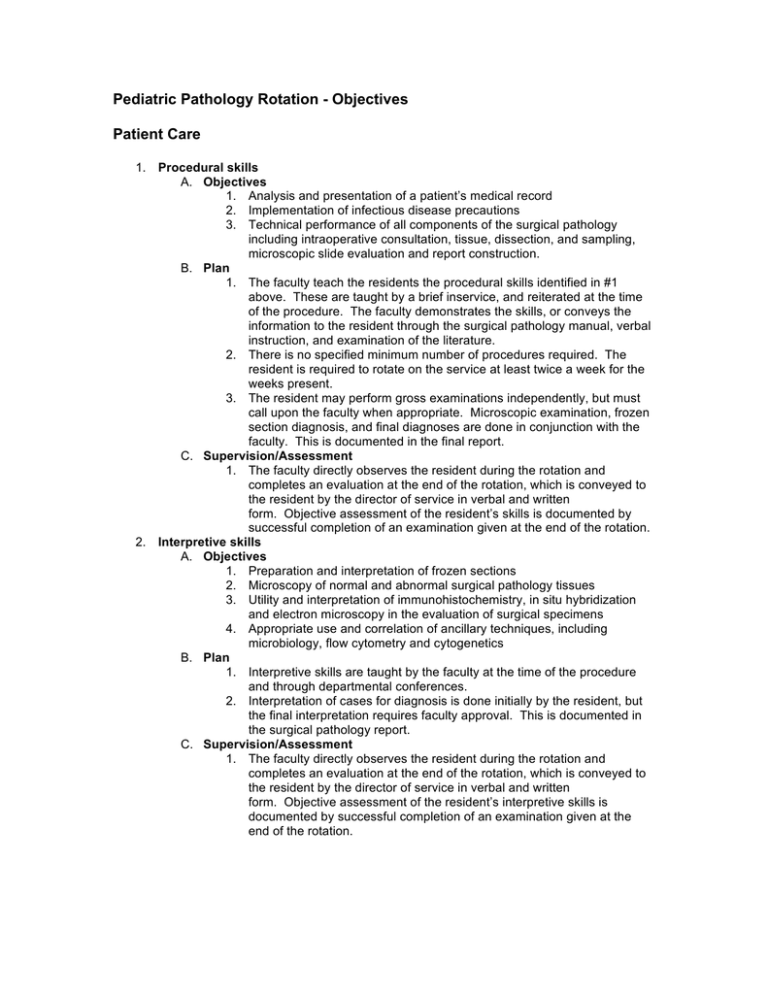
Pediatric Pathology Rotation - Objectives Patient Care 1. Procedural skills A. Objectives 1. Analysis and presentation of a patient’s medical record 2. Implementation of infectious disease precautions 3. Technical performance of all components of the surgical pathology including intraoperative consultation, tissue, dissection, and sampling, microscopic slide evaluation and report construction. B. Plan 1. The faculty teach the residents the procedural skills identified in #1 above. These are taught by a brief inservice, and reiterated at the time of the procedure. The faculty demonstrates the skills, or conveys the information to the resident through the surgical pathology manual, verbal instruction, and examination of the literature. 2. There is no specified minimum number of procedures required. The resident is required to rotate on the service at least twice a week for the weeks present. 3. The resident may perform gross examinations independently, but must call upon the faculty when appropriate. Microscopic examination, frozen section diagnosis, and final diagnoses are done in conjunction with the faculty. This is documented in the final report. C. Supervision/Assessment 1. The faculty directly observes the resident during the rotation and completes an evaluation at the end of the rotation, which is conveyed to the resident by the director of service in verbal and written form. Objective assessment of the resident’s skills is documented by successful completion of an examination given at the end of the rotation. 2. Interpretive skills A. Objectives 1. Preparation and interpretation of frozen sections 2. Microscopy of normal and abnormal surgical pathology tissues 3. Utility and interpretation of immunohistochemistry, in situ hybridization and electron microscopy in the evaluation of surgical specimens 4. Appropriate use and correlation of ancillary techniques, including microbiology, flow cytometry and cytogenetics B. Plan 1. Interpretive skills are taught by the faculty at the time of the procedure and through departmental conferences. 2. Interpretation of cases for diagnosis is done initially by the resident, but the final interpretation requires faculty approval. This is documented in the surgical pathology report. C. Supervision/Assessment 1. The faculty directly observes the resident during the rotation and completes an evaluation at the end of the rotation, which is conveyed to the resident by the director of service in verbal and written form. Objective assessment of the resident’s interpretive skills is documented by successful completion of an examination given at the end of the rotation.
